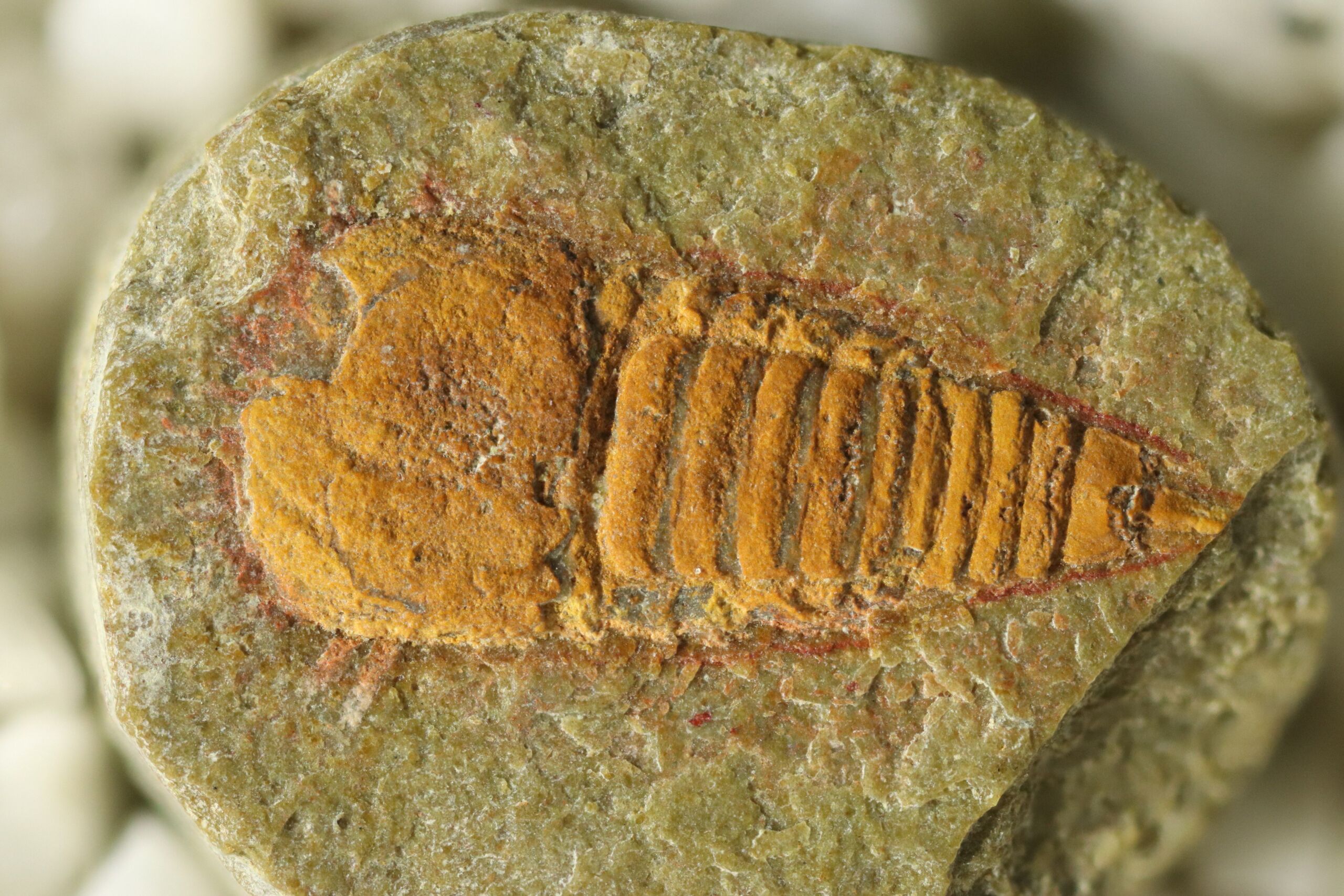
In the early 2000s, local fossil collector Mohamed ‘Ou Said’ Ben Moula discovered numerous fossils at Fezouata Shale, a site in Morocco known for its well-preserved fossils from the Early Ordovician period, roughly 480 million years ago. Recently, a team of researchers at the University of Lausanne (UNIL) studied 100 of these fossils and identified one of them as the earliest ancestor of modern-day chelicerates, a group that includes spiders, scorpions, and horseshoe crabs.
The fossil preserves the species Setapedites abundantis, a tiny animal that crawled and swam near the bottom of a 100–200-meter-deep ocean near the South Pole 478 million years ago. It was 5 to 10 millimeters long and fed on organic matter in the seafloor sediments. “Fossils of what is now known as S. abundantis have been found early on—one specimen mentioned in the 2010 paper that recognized the importance of this biota. However, this creature wasn’t studied in detail before simply because scientists focused on other taxa first,” Pierre Gueriau, one of the researchers and a junior lecturer at UNIL, told Ars Technica.
The study from Gueriau and his team is the first to describe S. abundantis and its connection to modern-day chelicerates (also called euchelicerates). It holds great significance, because “the origin of chelicerates has been one of the most tangled knots in the arthropod tree of life, as there has been a lack of fossils between 503 to 430 million years ago,” Gueriau added.
An ancestor of spiders
The study authors used X-ray scanners to reconstruct the anatomy of 100 fossils from the Fezouata Shale in 3D. When they compared the anatomical features of these ancient animals with those of chelicerates, they noticed several similarities between S. abundantis and various ancient and modern-day arthropods, including horseshoe crabs, scorpions, and spiders.
For instance, the nature and arrangement of the head appendages or ‘legs’ in S. abundantis were homologous with those of present-day horseshoe crabs and Cambrian arthropods that existed between 540 to 480 million years ago. Moreover, like spiders and scorpions, the organism exhibited body tagmosis, where the body is organized into different functional sections.
“Setapedites abundantis contributes to our understandings of the origin and early evolution of two key euchelicerate characters: the transition from biramous to uniramous prosomal appendages, and body tagmosis,” the study authors note.
Currently, two Cambrian-era arthropods, Mollisonia plenovenatrix and Habelia optata are generally considered the earliest ancestors of chelicerates (not all scientists accept this idea). Both lived around 500 million years ago. When we asked how these two differ from S. abundantis, Gueriau replied, “Habelia and Mollisonia represent at best early-branching lineages in the phylogenetic tree. While S. abundantis is found to represent, together with a couple of other fossils, the earliest branching lineage within chelicerates.”
This means Habelia and Mollisonia are relatives of the ancestors of modern-day chelicerates. On the other side, S. abundantis represents the first group that split after the chelicerate clade was established, making it the earliest member of the lineage. “These findings bring us closer to untangling the origin story of arthropods, as they allow us to fill the anatomical gap between Cambrian arthropods and early-branching chelicerates,” Gueriau told Ars Technica.
S. abundantis connects other fossils
The researchers faced many challenges during their study. For instance, the small size of the fossils made observations and interpretation complicated. They overcame this limitation by examining a large number of specimens—fortunately, S. abundantis fossils were abundant in the samples they studied. However, these fossils have yet to reveal all their secrets.
“Some of S. abundantis’ anatomical features allow for a deeper understanding of the early evolution of the chelicerate group and may even link other fossil forms, whose relationships are still highly debated, to this group,” Gueriau said. For instance, the study authors noticed a ventral protrusion at the rear of the organism. Such a feature is observed for the first time in chelicerates but is known in other primitive arthropods.
“This trait could thus bring together many other fossils with chelicerates and further resolve the early branches of the arthropod tree. So the next step for this research is to investigate deeper this feature on a wide range of fossils and its phylogenetic implications,” Gueriau added.
Nature Communications, 2023. DOI: 10.1038/s41467-024-48013-w (About DOIs)
Rupendra Brahambhatt is an experienced journalist and filmmaker. He covers science and culture news, and for the last five years, he has been actively working with some of the most innovative news agencies, magazines, and media brands operating in different parts of the globe.



3175x175(CURRENT).thumb.jpg.b05acc060982b36f5891ba728e6d953c.jpg)
Recommended Comments
There are no comments to display.
Join the conversation
You can post now and register later. If you have an account, sign in now to post with your account.
Note: Your post will require moderator approval before it will be visible.